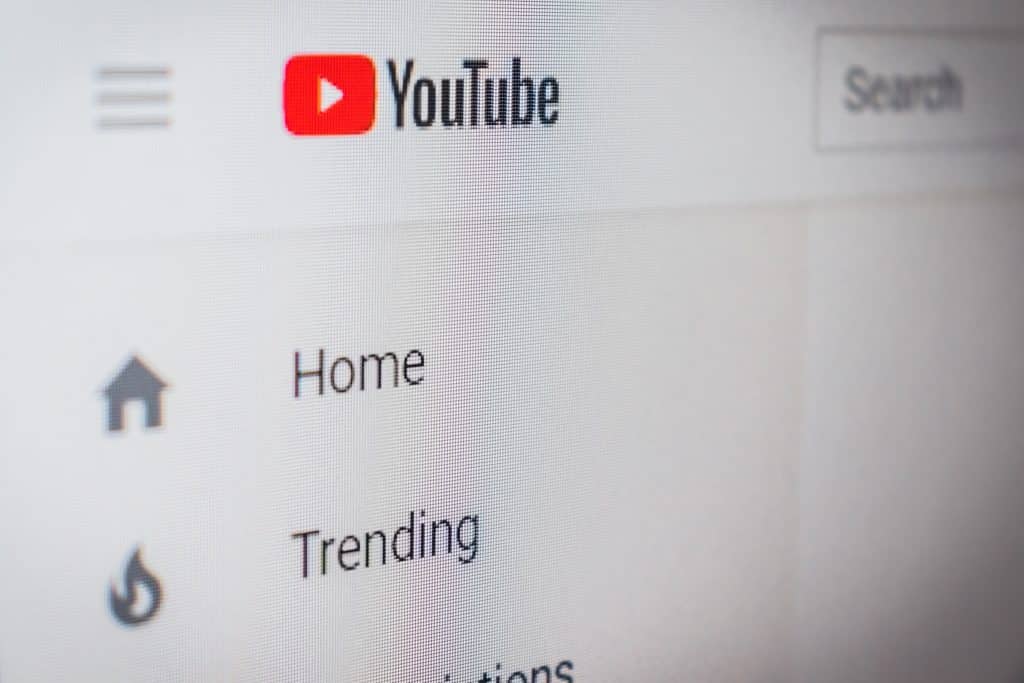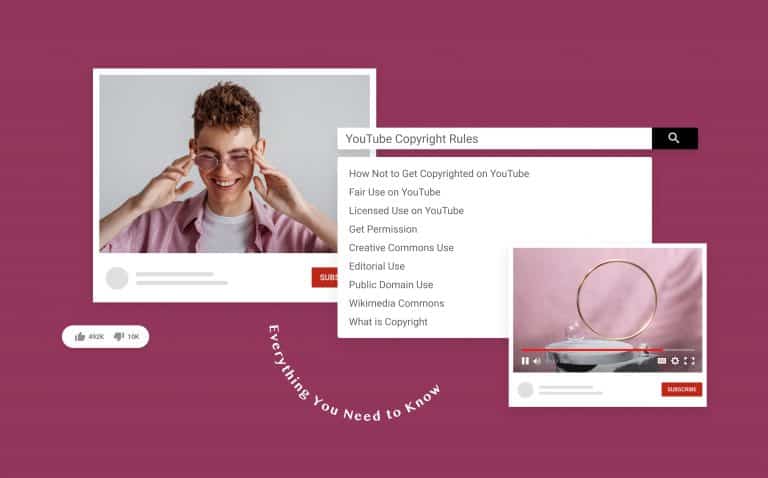
YouTube Analytics Guide: How to Grow Your Channel
YouTube is an incredibly competitive landscape. As you strive to grow your channel and reach more people, you’ll want to get as much information as possible about your performance to make smarter decisions moving forward. Fortunately, YouTube Analytics is a free feature available to every YouTube channel. It provides plenty of helpful data for content creators. Whether it’s YouTube click-through rate, watch time, traffic sources, or any other metric you’d like to use, it can be found in the YouTube Analytics dashboard.
Let’s take a closer look at how analytics of YouTube work and how you can leverage this data for your benefit.
What Exactly is YouTube Analytics?
YouTube Analytics is a resource provided as part of your YouTube channel. This is a free dashboard of metrics that you can sort, view, and analyze in various ways. A YouTube channel’s analytics can tell the owner of that channel how the videos are performing, what the audience looks like, and where opportunities for improvement might exist.
Simply put, if you are using YouTube for your business, you should be carefully monitoring your analytics as a part of that project.
Why Are YouTube Analytics So Important
The importance of YouTube Analytics lies in how it can help you optimize your channel’s performance. You already pour plenty of time and effort into creating great content, but that’s only part of the battle on YouTube. You also need to understand how your audience responds to that content and which videos seem to hit home with your viewers. By learning as much as you can about past performance, you can make the right decisions to spur future growth.
Don’t be intimidated by the idea of diving into your analytics to pull out useful insights. You don’t need a degree in statistics or any experience analyzing data to find value here. With just a basic primer on how YouTube Analytics works and which metrics are important, you can steer your channel in the right direction.
How to Access YouTube Analytics
Before you can start analyzing the data produced by your channel, you’ll need to know where to find this information on the YouTube platform. Fortunately, YouTube video analytics are easy to find in just a few short steps.
Step 1: Log in to YouTube Channel
The first step, as you might imagine, is to log in to your YouTube channel. This is the same process you complete when loading a new video, and you may already be logged in.
Step 2: Open YouTube Studio
Next, you’ll want to go to YouTube Studio. This is found by looking to the upper-right corner of your screen, where you’ll tap or click on your profile, and then choose YouTube Studio when the menu opens up.
Step 3: Click on Channel Analytics
Once you are in the studio, you’ll see a tab on the left side of the screen for Analytics. Tap or click on that word and your overall Channel Analytics dashboard will be presented.
Step 4: Select Data Type
Now that you have accessed the main page for your analytics data, it’s time to get more specific about what you want to see. Across the top of the screen, you should see four tabs that you can pick from at this point – Overview, Reach, Engagement, and Audience.
YouTube Analytics Data Types
YT Analytics is conveniently broken down into these segments to help you review the data related to your channel. Let’s take a closer look at what you’ll find under each of these four headings.
Overview
As you might expect, the Overview tab for your YouTube video metrics will contain the big-picture data that you’ll want to look at first. One of the best places to start here is with your top videos. It highlights the best videos on your channel in the designated time period. This is also where you will find your subscriber count, your total channel views, and your accumulated channel watch time.
Reach
The term “reach” relates to how many people you are reaching with your content, whether or not they are actively watching your videos. So, one of the big numbers you’ll find in this section is total impressions. This is how many times YouTube users had an opportunity to click on a video thumbnail or title during their experience on the platform. A closely related metric to impressions is click-through rate, the percentage of people who clicked on your videos divided by your total impression count.
Engagement
It’s great to get people to watch your videos, but it’s even better if they are engaged with the content. One of the first ways to measure engagement is to check on your average watch time, which can be found under this tab. A low average watch time may indicate that the viewers who find your content aren’t enjoying it for one reason or another. This is one of the biggest YouTube metrics to monitor as your channel moves along since it will be hard to grow successfully without solid performance in the engagement category.
Audience
A statistic like total views tells you how many times your videos were watched – but it doesn’t tell you how many different people were watching. That’s what you can learn here, among other things. There will be a count for your unique viewers as well as your returning viewers, and you’ll see how much of the watch time on your videos come from subscribers. Also, if you are trying to find the right time to release new videos, the data in this section can help you optimize that part of your publishing process.

Advanced Analytics
Once you get familiar with the basics of how YouTube Analytics works and what information it offers, you might find yourself wanting to dig deeper and learn more. At that point, consider venturing into the Advanced Analytics section to find more data on your videos and your channel as a whole.
This section will help you break down your audience and get a better idea of who is watching your videos. That’s important because you can find out who seems to like the kinds of content you are creating. You can then target that group with future efforts. If you don’t know who is watching, you may struggle to stay on track with content that hits the mark with those viewers.
Traffic Source
The name pretty much says it all here. Where is the traffic on your channel coming from? This is useful to know, so you can refine your marketing efforts to focus on what is already proving to be successful. You’ll most likely have a blend of sources reflected in the data, including those coming from external sources, YouTube search results, and the suggested videos section.
Geography
You may be interested to know where most of your viewers are physically located, and that information is only a click or tap away in the Geography section. If you find that a large portion of your audience comes from one specific geographic area, it might make sense to tailor some of your future content to that market.
Viewer Age and Gender
Most likely, you have some idea of what demographic your content is catering to from an age and gender perspective. But do the numbers reflect your expectations? If your audience is skewing younger or older than you thought it would, adjusting your content planning process could be in order.
Subscription Information
Subscribers are the lifeblood of any thriving YouTube channel. A strong, engaged base of subscribers will virtually guarantee that each video you publish will receive at least a solid number of views – and you can hope that the video spreads from there to gain even more traction. Use this section of the analytics dashboard to learn as much as possible about your subscribers.
Benefits of Using YouTube Analytics
So, you might be wondering why you should spend time worrying about YouTube trends analytics at all? Shouldn’t you just spend that time making more great content? Well, making more content is always a good plan, but you can use YouTube metrics to make sure that content resonates with your audience. This will help with audience retention and overall performance for your channel. When you pick out a video and choose analytics, you stand to learn a lot about why it has performed the way it has.
Understand Your Audience
Perhaps the most compelling reason to use YouTube channel analytics is to understand your audience as accurately as possible. It’s all too easy to make assumptions about your audience, but the numbers don’t lie. Are you getting good watch time from subscribers? Are there any viewing patterns you notice in your videos that you can use to improve results with future pieces of content? Take the time to fully understand who your audience is and what they want – that information will pay off later.
Track Your Channel’s Growth
With any luck, you’ll find information in YouTube ads reporting and other places that indicate that your channel is growing. Every channel wants to gain views and subscribers, but what is it that is causing your channel to grow? By digging into the analytics, you might be able to figure it out. For example, if your subscriber numbers make a big leap every time you post a certain type of video, more of those kinds of videos may be in order.
Accurate Data Means Better Strategy
The decisions you make in business are only as good as the data you have to back up those decisions. That’s as true on YouTube as it is anywhere else in the business world. Since the YouTube Analytics that actually matter are coming directly from the source, you can trust that the information is accurate, and it can be used to make sound choices about the future of your channel. Take the guesswork out of the process and lean on real data to guide the ship.
Track Trends and Patterns
Using YouTube channel metrics is the best way to make sure your channel is staying on the right track. Specifically, you need to make sure that you aren’t assuming what worked at the start of your channel will keep working forever. Monitoring trends in the analytics reporting will help you adjust to the changing market and remain relevant for years to come.
Key Takeaways
Ultimately, taking the time to look at these numbers should be an exercise in learning about your channel. After all, if you don’t come away with actionable insights that can help you make better decisions and better content, it will all have been wasted. Don’t just get stuck looking at your YouTube subscriber count graph when there is much more you can be doing to grow your channel. Here are three key takeaways to keep in mind.
Impressions and CTR
Knowing your impressions and click-through rate is a great way to evaluate the quality of your thumbnail images and video titles. Experienced YouTube publishers know that thumbnails and enticing headlines have a lot to do with which videos return high CTRs. If you are getting a lot of impressions but limited clicks, it may be your thumbnail and title combination that is to blame. Work on improving those elements, and you might be able to dramatically increase your views without any other changes.
Knowing Who’s Engaged
Keeping an eye on YT analytics can also help you understand which segment of the audience is most engaged with your content. Who is leaving comments under your videos, and who is clicking the “Like” button? You always want to make the best possible content, but you should be particularly interested in serving the people that are most engaged – that’s the core component of your audience. Those are the people most likely to watch again, purchase products, etc.
Better Understand Your Target Demographic
It may be that your target demographic actually shifts once you start publishing content and reviewing your YouTube metrics. For example, content you expected only to appeal to younger males may wind up connecting with an audience that is older and divided evenly between the genders. In that case, you’ll want to revise your strategy to reflect the demographic that has been established on your channel.
Other Metrics to Consider
As you continue to get more and more familiar with YouTube Analytics, you’ll want to keep exploring new ways to evaluate your performance. In this section, we’ve listed six metrics that you might want to monitor as your channel moves forward. Which ones of these you decide to focus on as key indicators of your performance will depend on your goals and plans for the channel.
Watch Time
It’s common for content creators to check their total number of views, but the argument could be made that total watch time is more important. YouTube watch time matters because it is a strong indicator of engagement – if users are clicking on your videos and then watching the whole thing, they obviously find value and quality in your content. If your overall watch time is lower than you would expect given your view count, work on creating a stronger start to your videos to make sure, you retain as much attention as possible.
Subscription Numbers
If you were to ask experienced YouTubers which metric was most important to them, subscriber count would probably go to the top of the list. This is important for many reasons, but chief among them is the fact that subscribers have presented your new videos each time they go live. In other words, they don’t have to go searching for your videos – the videos come to them. Monitor trends in subscriber count to see when it goes up and down, and look for correlations between those movements and actions you take on your channel.
Revenue Fluctuation
When you first get started on YouTube, getting your channel monetized may be one of your first goals. Once that happens, you’ll want to keep an eye on revenue fluctuation to see how the ad revenue changes based on the types of videos you publish, etc. It’s important to remember that simply because ad revenues go down doesn’t mean you have to change what you are doing. Consider your priorities for the channel and decide if you are trying to optimize ad money or reach other targets.
Engagement Numbers
Building an audience on YouTube that loves your content is based on engagement. An audience that is engaged will not only watch videos all the way through to the end, but they will also leave comments, “Like” the videos, and more. So, keep an eye on your average view duration on YouTube to measure engagement, but also watch your comment section and how many likes you accrue.
Unique Viewers
This is an easy one to overlook, but it actually tells a better story than total views. It’s great if someone likes your content enough to watch the same video 10 times, but that is not the same as having reached 10 different people. By looking at unique viewers, you’ll know how many people you have reached with a given video or with your channel as a whole.
Keywords
If you have any experience with search engine optimization for a website, the concept is similar on YouTube. You are trying to get impressions from the organic YouTube search results by using the right keywords in your titles, descriptions, etc. Doing some research into popular keywords in your niche and then optimizing for those keywords is a good starting point as you seek as much attention in the organic results as possible.
How to Check YouTube Analytics for Other Channels
YouTube Analytics is a powerful tool that you can use to improve your channel. It does, however, have one notable limitation – you can only use it to analyze the performance of your own channel. For other channels, you will not be able to view any data other than information that is published publicly on the platform, like the views for each video or the subscribers for the channel.
Sometimes, you may wish to gather some insight on how other channels are performing. For example, when you measure out many impressions turn into views on YouTube for your channel, you may wish to get an idea of the CTR for other channels, as well. This can be tricky, but the tools listed below should help.
Tubular Intelligence
This powerful tool can help you with YouTube analytics for other channels, but that is just scratching the surface of what you can do with it. Given the incredible size of the online video landscape today, it is nearly impossible to sort through it all manually to pick out any meaningful patterns or insights. While you can use your YouTube Analytics for your own channel, Tubular Intelligence can help you see the bigger picture.
Analyze Data from Multiple Social Platforms
If you are trying to figure out how to see YouTube Analytics for other channels, don’t forget that YouTube is only one of many important platforms in the landscape. With Tubular, you can also look into data from many of the other top platforms, like Facebook, Twitter, and Instagram.
BuzzSumo
You can’t see exact YouTube video analytics for other channels, but you can gain useful insights into how other channels perform when you use a tool like BuzzSumo. Don’t spend time on marketing initiatives that are destined to fail when you can research what is already working in your market segment. There is a limited free version of this tool for you to test out what it can do, although you’ll need to upgrade to an advanced premium plan to use their YouTube Analyzer.
Detailed and Rich Data
BuzzSumo has become one of the leaders in this space thanks to the level of detail that it includes in reports. There is everything you need here to make accurate, informed decisions about how to tailor your channel to the needs of the audience and to exploit opportunities in the market.
Social Blade
Speaking of popular tools, Social Blade certainly fits into that category. One of the best things about this tool is that it is free to use (a premium version is available), and it’s simple to get started. In fact, as soon as you land on the homepage, you can enter a YouTube channel in the search bar, and you’ll immediately be taken to a page with a variety of metrics and rankings. If you are looking for a YouTube analytics tool for other channels that works quickly and easily, you might want to start here.
Free To Use
As mentioned above, you won’t have to spend anything to get started with this tool. Naturally, this is a big part of what makes Social Blade so popular. With that said, there are some valuable features that can be unlocked if you decide to upgrade to a premium plan, so heavy users might want to consider that option.
Supermetrics
Getting back to another full-featured data tool, Supermetrics can help bring your marketing efforts to life. Far from a tool that is limited to YouTube, this is a powerful suite of tools that can touch every single part of your marketing planning and execution process. While this tool is probably beyond the needs of a small startup company, established businesses with the budget to explore advanced marketing opportunities could benefit massively with Supermetrics on their side.
Over 70 Integrations
Of the many things that make Supermetrics popular, it’s the ability of the tool to work with so many of your favorite sources of data that makes it easy to use. You will automatically be able to bring in data from places like Google Ads, Facebook Ads, and many other locations. Once your account is set up and operational, you can simply log in and see all the important data you need in a single spot.
Frequently Asked Questions
Q: What is a Good Average View Duration on YouTube?
A: One of the ways YouTube is able to evaluate the performance of a video is through a metric called average view duration. The thinking here is simple – if people who start watching a video keep watching it to the end, that video must be serving their needs. On the other hand, if people click on a video and then quickly go back to find something else, that indicates the video is of low quality or doesn’t deliver on what the title and thumbnail promise. For a starting point, you should aim to have the average viewer watch at least 50% of the content in a given video. Remember that is an average – some will watch all the way to the end, while some will decide quickly to move on. If your average stays north of 50%, that’s a good start, and you can work on improving your video quality and content to hopefully reach the 75% range in the future.
Q: What are Impressions on YouTube?
A: An impression is recorded in your thumbnail anytime, and video titles are displayed for a YouTube user to click on. An example of this would be when your video appears in the search results on the YouTube platform. A user searches for a particular phrase, the YouTube algorithm decides that your video is relevant, and it is displayed along with other results for the user to consider. Each time this happens, one impression is counted. Getting as many clicks as possible out of those impressions – optimizing your click-through rate, in other words – is a bit part of finding success on YouTube.
Q: How to Get More Impressions on YouTube?
A: There are various strategies you can use to improve your total number of impressions. For starters, you can focus on search – optimizing your titles based on potential search queries and targeting topics and searches that are not widely popular. Another approach is simply to improve the quality of your content. Better videos tend to produce better metrics like longer watch times and higher click-through rates, and YouTube will take notice of your strong performance – which leads to more impressions.
Q: Why Do People Get Recommendations for Videos Uploaded in the Past 10-12 Years?
A: You may notice as a YouTube user that some recommended videos have been on the platform for years. This is great for the content creators who keep getting views on old videos, but why does it happen? It’s hard to say exactly, and there is likely more than one potential reason. Recommendations are largely based on the past activity of that user, so it may be that the user has watched other, similar videos previously.
Q: How Do YouTube Videos Go Viral?
A: Every YouTube content creator dreams of having a video go viral. This is when a video takes off to unprecedented heights on your channel, bringing in tons of views and likely many new subscribers. Unfortunately, there is no one recipe for creating a viral video. You’ll obviously need to create something that is interesting and appealing to a wide audience, but it’s hard to nail down what that means exactly. Often, videos with some type of emotional element are the ones that strike a chord with viewers, so that is a starting point. Also, aggressive marketing of your video shortly after it has launched – or even before it has launched – could help. Getting strong performance numbers early on may encourage YouTube to recommend the video more, thus driving more views.
Q: What is Considered a Lot of Views on YouTube?
A: What counts as “a lot” of views is completely subjective and based on a number of factors like the niche you are trying to serve, how long you have been on YouTube, and much more. For example, well-established channels that have had time to grow an audience in a popular niche frequently get millions of views per video. But those are some of the most successful channels on the platform. It’s also possible to run a channel that serves your audience and creates revenue for your business with far fewer views.
Q: What is the Meaning of CTR in YouTube?
A: CTR stands for “click-through rate”. The math for this one is simple – you divide the number of times your video thumbnail is clicked on by the number of times it was displayed on YouTube. For example, if your video is clicked 10 times and it was displayed 100 times, that would equal a click-through rate of 10%. We should note that a CTR of around 10% would be outstanding. Even if you get half that number for a video, a 5% CTR, you’ll probably be quite pleased with the results.
Conclusion
YouTube Analytics offers a treasure trove of information for channel owners and operators. While it can be a little intimidating to sort through the data and pull out valuable insights, you’ll quickly get the hang of what everything means and which metrics are most important to you. We hope this article proves to be a useful resource, and good luck with your YouTube endeavors!



